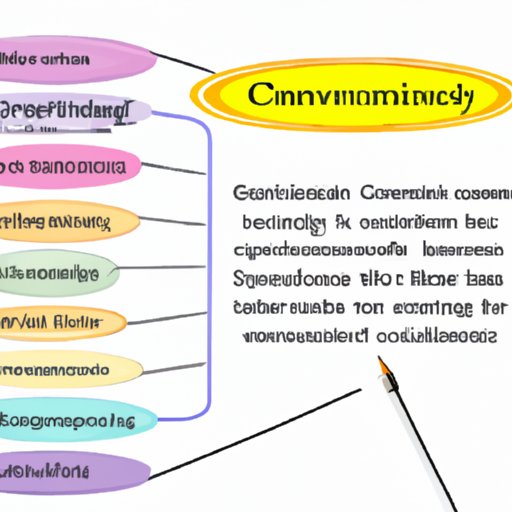Introduction
Evidence in writing is a form of supporting information used in essays, articles, research papers, and other written works. It serves as proof of an argument or claim made by an author, and can include facts, figures, quotes, and other types of data. The purpose of this article is to provide a comprehensive overview of what evidence in writing is, the different types of evidence used, how to use it effectively, best practices for incorporating it into writing, how to evaluate sources, and how to cite sources.

Outlining the Types of Evidence Used in Writing
When it comes to providing evidence in writing, there are three main categories of sources: primary, secondary, and tertiary. Each type of source has its own set of characteristics and should be used in different circumstances.
Primary Sources
Primary sources are first-hand accounts of an event or situation. This could include eyewitness testimonies, interviews, diaries, letters, photographs, videos, or any other type of document that was created at the time the event occurred. Primary sources are considered the most reliable type of evidence because they come directly from the source.
Secondary Sources
Secondary sources are documents that are based on primary sources. Examples of secondary sources include textbooks, journal articles, reviews, and scholarly studies. These sources are considered less reliable than primary sources because they are not created by the original source.
Tertiary Sources
Tertiary sources are documents that are based on secondary sources. Examples of tertiary sources include encyclopedias, dictionaries, and other reference materials. Tertiary sources are considered the least reliable type of evidence because they are based on other sources and can be easily misinterpreted.
Exploring How to Use Evidence Effectively in Writing
In order to use evidence effectively in writing, there are certain steps that must be taken. First, writers need to establish their credibility by clearly stating their purpose and providing evidence to back up their claims. Secondly, writers should be specific and relevant when selecting sources and evidence. Thirdly, writers should choose appropriate sources that are reliable and credible.

Examining the Best Practices for Incorporating Evidence into Writing
When incorporating evidence into writing, there are certain best practices that writers should follow. First, writers should use logical connections to link evidence to their argument or claim. Secondly, writers should support their claims with evidence that is relevant and specific. Lastly, writers should acknowledge counterarguments and provide evidence to refute them.
Discussing How to Evaluate Evidence for Writing
In order to use evidence effectively in writing, it must be evaluated first. Writers should consider the source’s reliability and accuracy before using it in their work. Writers should also assess unreliable sources and weigh the evidence against their own argument or claim.

Analyzing Ways to Cite Sources and Include Evidence in Writing
In order to ensure that sources and evidence are properly acknowledged, writers should use one of the three major citation styles: APA, MLA, and Chicago. Writers should also use in-text citations and create a reference list at the end of their work.
Conclusion
In conclusion, evidence in writing is a form of supporting information used to back up an argument or claim. There are three main types of evidence: primary, secondary, and tertiary. In order to use evidence effectively, writers should establish their credibility, be specific and relevant, and choose appropriate sources. Writers should also follow best practices for incorporating evidence into writing, such as using logical connections, supporting claims with evidence, and acknowledging counterarguments. Finally, writers should evaluate evidence for reliability and accuracy, and cite sources correctly according to the appropriate style guide.
By understanding the different types of evidence and following the best practices for incorporating it into writing, writers can ensure that their work is well-supported and credible. Ultimately, evidence is an invaluable tool for writers and can enhance the overall quality of their writing.
(Note: Is this article not meeting your expectations? Do you have knowledge or insights to share? Unlock new opportunities and expand your reach by joining our authors team. Click Registration to join us and share your expertise with our readers.)
